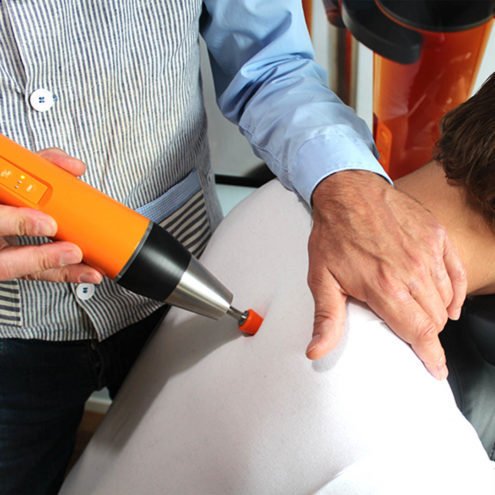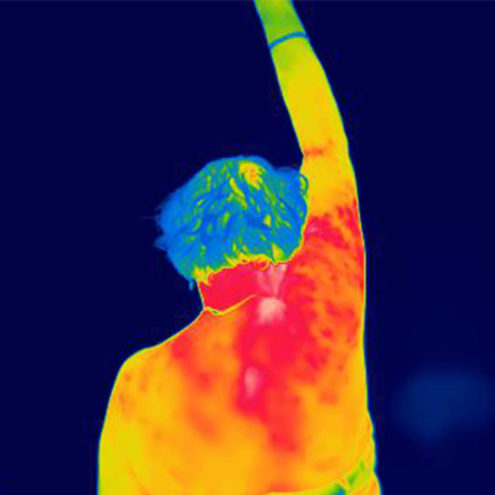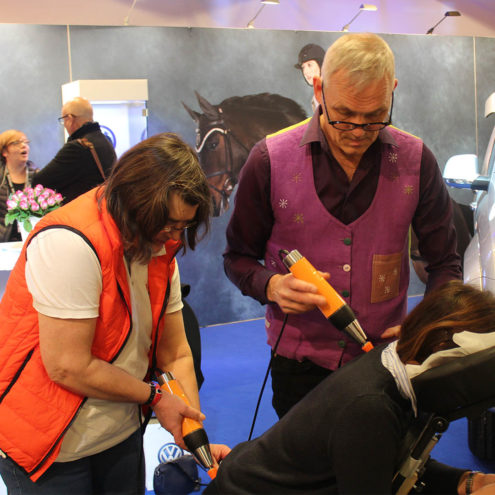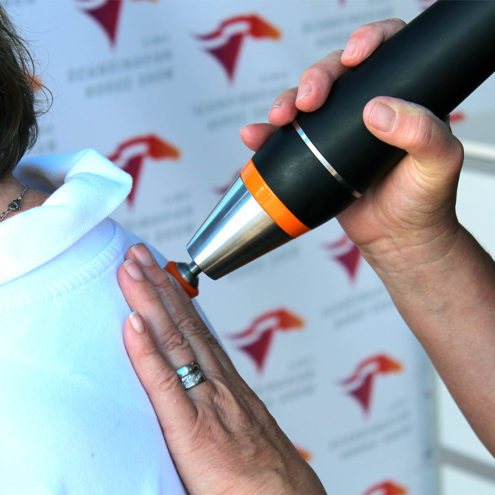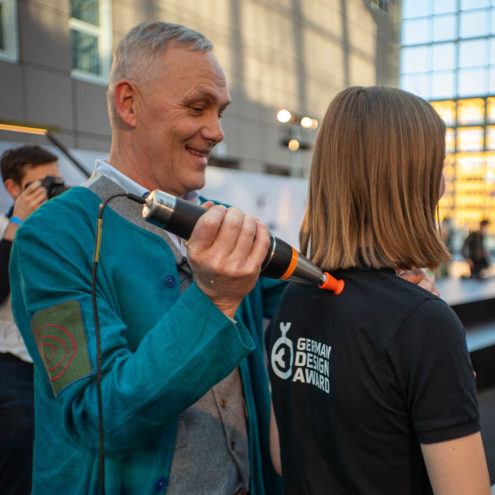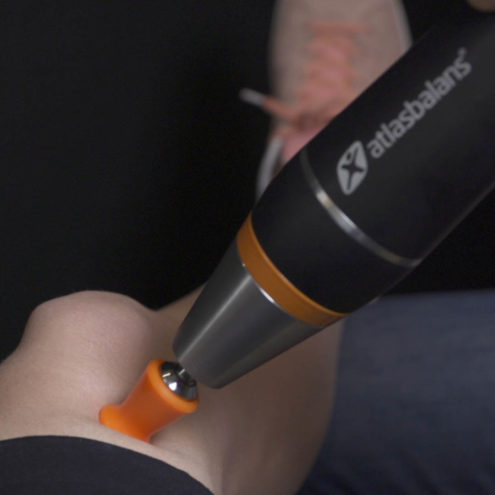Pain in the lower back – Causes, symptoms and treatment at the FasciaClinics

Experiencing low back pain is a condition that affects a wide range of people of all ages and lifestyles. This article aims to shed light on the causes, symptoms and treatment methods related to tailbone pain, specifically from a fascia perspective offered at the FasciaClinics.
What is lower back pain?
Definition and common causes
Low back pain, more commonly known as lumbar pain means feeling pain as in the lower back. It can be experienced as acute (short-term) or chronic (long-term) pain. Common causes of this type of pain include excessive stretching of muscles and ligaments, degeneration of the cartilage in the spine, and sometimes more serious medical conditions such as osteoporosis or vertebral fractures.
The difference between sciatica and lumbago
Lumbago is another name for lower back pain. Sciatica describes pain caused by a disc impingement, radiating along the sciatic nerve, which can affect the back, buttocks and legs. Back pain or acute lumbago is a sudden and intense pain in the lumbar spine that often occurs after a quick or incorrect movement.
Why do you lower back pain?
Physical causes of lower back pain
Pain in the lower back can occur due to physical overload, improper lifting techniques or an accident. Physical causes also include changes in the anatomical structures of the spine such as herniated discs or spinal stenosis. In pregnancy, it is also common to experience pain in the lower back.
Injuries and overexertion
A common cause of low back pain is injury or overuse of muscles and ligaments. These injuries can be caused by sudden movements, lifting heavy objects or by prolonged, repetitive use.
Prolonged sitting and poor ergonomics
Poor posture with long periods of sedentary sitting, especially with poor ergonomics, can cause lower back pain or make it worse. This leads to an increased strain on the vertebrae and surrounding musculature.
Psychological and lifestyle causes
Pain in the tailbone can also be linked to psychological factors such as stress and anxiety, which can lead to muscle tension. Lifestyle-related factors such as lack of physical activity also contribute to the risk factors.
Stress and tension
High stress levels can cause or worsen muscle tension in the back, leading to pain. It is important to address both physical and mental stress to effectively treat low back pain.
Lack of physical activity
A sedentary lifestyle can lead to weakened back muscles and reduced flexibility, increasing the risk of pain and injury in the lower back.
Symptoms and diagnosis of pain in the lower back
Common symptoms associated with lumbar pain
Symptoms may include muscle stiffness, limited mobility, and a persistent pain in the lower back. Some individuals may also experience a sharp, stabbing pain.
Radiating pain down the leg and foot
In conditions such as sciatica, pain can radiate from the lumbar spine down the leg and into the foot, caused by irritation or pinching of the sciatic nerve.
Numbness and tingling
In addition to pain, people may experience numbness or tingling in the back, legs, or feet, indicating nerve compression or other neurological problems.
How are problems in the lower back diagnosed?
The diagnosis of low back pain starts with a medical history and physical examination. If necessary, additional tests such as X-rays, MRI or CT scans may be used to identify the exact cause of the pain.
How we at the FasciaClinics can help you with lower back pain
At FasciaClinics, we focus on a holistic approach to the treatment of low back pain. Fascia is the network of connective tissue that binds and permeates everything in our body. All cells, tissues (even bone), muscles and organs contain fascia. Fascia treatment focuses on releasing tension and adhesions in the fascia and increasing its flow. This allows us to have an improved mobility of the body with less pain and improved self-healing.
By focusing on the role of fascia in pain, we can offer effective treatments aimed at restoring balance and function to your body. Our aim is not only to treat the symptoms, but also to address the underlying causes of your pain for long-term relief.
Preventive measures and self-care to reduce the risk of lower back pain
Preventing lower back pain is possible by introducing certain habits and routines into your everyday life. This can include anything from ergonomic adjustments in the work environment to regular physical activity.
Ergonomic tips for work and everyday life
Good workplace ergonomics are essential to prevent back pain. Make sure your working position is optimal – use a chair that supports the natural curve of your spine, adjust the height of your screen so it’s at eye level, and make sure your feet can rest flat on the floor or on a footrest. Even if you work from home, it is important to invest in a proper workstation.
The importance of the right sitting and standing postures
The right posture for sitting and standing can significantly reduce the strain on your back. Avoid sitting or standing in the same position for long periods. Take regular breaks to walk around and stretch. When standing, keep your weight evenly distributed on both feet and keep your back straight.
Physical exercises and activities
Regular physical activity strengthens back muscles and improves flexibility, which can reduce the risk of back pain. Balance strength training with cardio and include activities such as swimming, walking or cycling in your daily routine.
Strengthening exercises for the back and abdomen
Specific exercises that strengthen the back and abdominal muscles can prevent future tailbone pain. Core-stabilizing exercises, such as the plank and bird-dog, are particularly effective in building up the muscles around the spine.
Stretching and relaxation techniques
Regular stretching can improve your flexibility and reduce the risk of muscle strain. Yoga and Pilates are excellent methods to combine stretching with relaxation. These activities not only contribute to physical health, but can also reduce stress, which is a common cause of back pain.
When should you seek professional help for lower back pain?
It is important to recognize when lower back pain requires professional medical assessment and treatment. If the pain does not improve after a few weeks, seek medical attention. If you feel numbness and tingling in your legs, seek medical attention as soon as possible.
Signs that you should seek medical care
If you experience severe pain that does not improve with rest or with medication, you should consider consulting a healthcare provider. Other warning signs include pain radiating down the legs, especially if accompanied by numbness or weakness.
Stabbing pain and everyday limitations
If the pain is sharp and limiting your ability to perform everyday activities, such as walking, sitting, or lifting, it is a clear sign that you should seek medical help.
Symptoms that do not improve over time
If your symptoms do not improve after a few weeks of self-care, or if they worsen, you should definitely seek professional help. A healthcare provider can offer a more detailed assessment and tailored treatment plans that may include physiotherapy, medication, or in rare cases, surgery.
At FasciaClinics we are very experienced in treating back-related problems and can offer a very effective treatment based on looking at the body as a whole. Do not hesitate to contact us for a consultation if you are experiencing recurrent or persistent pain in your lower back.
 Search
Search

